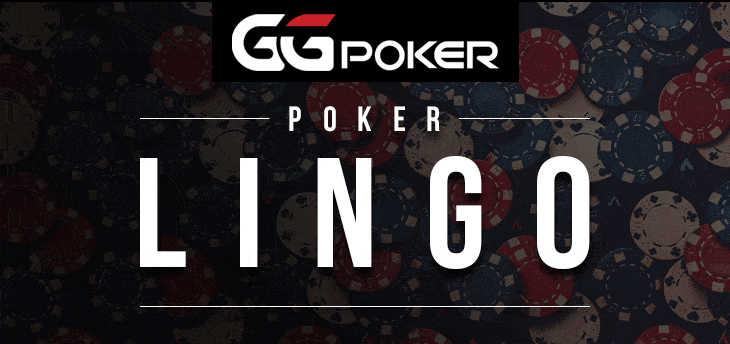Lesser-Known Poker Lingo

To embark on our exploration of poker lingo, understanding the specialized language is just as crucial as knowing the rules of the game itself. Poker terminology enriches the playing experience, adding color and depth. While understanding the unique variety of words found at the poker table may not be as important as understanding the basic rules, knowing what these terms mean can also give you an edge over the less-informed players and make you appear as a significantly more educated – within the realm of poker – player. So, whether you’re a beginner looking to get into the game or a seasoned player aiming to sharpen your knowledge, let’s dive into the lesser-known terms and slang that fill the poker rooms.
The Historical Context of Poker Lingo
Poker lingo is not just a collection of random words; it reflects the rich history and evolution of the game itself. Many terms have origins dating back to the mid-19th century when poker was a popular pastime on riverboats and in saloons. Understanding these origins can add another layer of appreciation for the game.
For instance, the term “cooler” likely evolved from the idea of something cold or unlucky happening to a player. Similarly, “donkey” might have originated from the stubbornness or foolishness associated with the animal, reflecting the behavior of a poor player.

The Colorful World of Poker Lingo
1. Cooler
If you have ever been in a situation where you had a strong hand that would win under almost any circumstance, but when the cards were turned over someone else held just a slightly stronger hand, that’s a “cooler.” It’s not about playing badly, it’s simply bad luck. For instance, imagine holding a full house, but getting beaten by a better full house. Historical records suggest that “coolers” were often cited in old poker tales as the ultimate bad beat scenario, adding a dramatic twist to the game’s narrative.
2. Donkey
In poker, a “donkey” is not an animal, but a derogatory term used to describe a poor or inexperienced player who often makes blatantly wrong plays. Interestingly, despite the negative connotation, donkeys can sometimes throw off experienced and professional players with their unpredictable and unorthodox behavior. This unpredictability is as chaotic as the early poker games where rules were not quite as defined as they are now, and anything could happen.
3. Nit
This term refers to a player who is excessively tight and conservative, almost to the point of being a passive player. A nit plays very few hands and folds at any sign of aggression or risk. While this might save them from big losses, it also often keeps them from making big wins. The term “nit” is believed to have originated from the tight and meticulous nature of such players, much like the meticulous work of picking nits from hair.
Strategies and Moves
1. Float
Floating is a sophisticated poker strategy. It occurs when a player calls a bet with a weak hand intending to bluff on later streets. This move is typically made against an opponent who frequently makes continuation bets but often gives up on the turn or the river if faced with any real and believable pressure. The strategy of floating is a modern development, reflecting the evolving complexity of poker strategies in the digital age.
2. Range Merging
Range merging occurs when a player makes a bet with a medium-strength hand with which they would usually check. This strategy can confuse opponents about the strength of your hand, leading them to make mistakes or not being able to read your strength properly in future hands. Range merging is another relatively new poker term, showcasing the continuous development of poker theory and practice.
3. Underbet
An underbet is a bet that is unusually small given the size of the pot. It’s a nuanced move that can indicate a variety of things, depending on the context—sometimes a trap, other times a probing bet, or just a simple attempt to buy a cheap card. The underbet is often used in modern poker to manipulate opponents’ perceptions and actions.

Uncommon but Useful Terms
1. Dark Bet
A “Dark Bet,” or “Betting in the Dark”, is a bet made after any current action is completed and before any future cards are revealed. A player may choose to make a “dark bet,” meaning they bet without looking at their cards or the next community card to be turned. This is often used to project strength or to keep opponents guessing. Dark betting has historical roots in the early days of poker, where bravado and deception were key components of the game.
2. Limp Re-Raise
A limp re-raise is a deceptive play that starts when a player initially limps into the pot (merely calling the big blind), only to raise after another player has made a bet. This move is typically employed with a very strong hand, aiming to lure aggressive players into the pot. The limp re-raise is a classic example of poker’s psychological depth, where players manipulate others’ perceptions and expectations.
3. Snowing
In draw poker, “snowing” is a bluffing technique where a player pretends to have a strong hand by not drawing any new cards and betting aggressively. This is done despite actually holding a weak hand that would typically warrant a discard or outright folding. This strategy aims to mislead opponents about the hand’s strength, encouraging them to fold under the false assumption that they’re beat. Snowing reflects the essence of poker’s psychological battle, where deception and nerve are critical.
Conclusion
In essence, poker language is as rich and varied as the game itself, peppered with vivid slang that reflects the psychological battles and strategic intricacies inherent to the game. Each term encapsulates a piece of poker’s storied past and evolving present, illustrating how language and strategy intertwine to create a dynamic and engaging experience. So next time you sit down at a poker table, remember: your knowledge of poker slang isn’t just academic—it’s a crucial part of your gameplay arsenal, giving you the confidence to bluff, bet, and raise your way to success. You have to be able to walk the walk and talk the talk.





